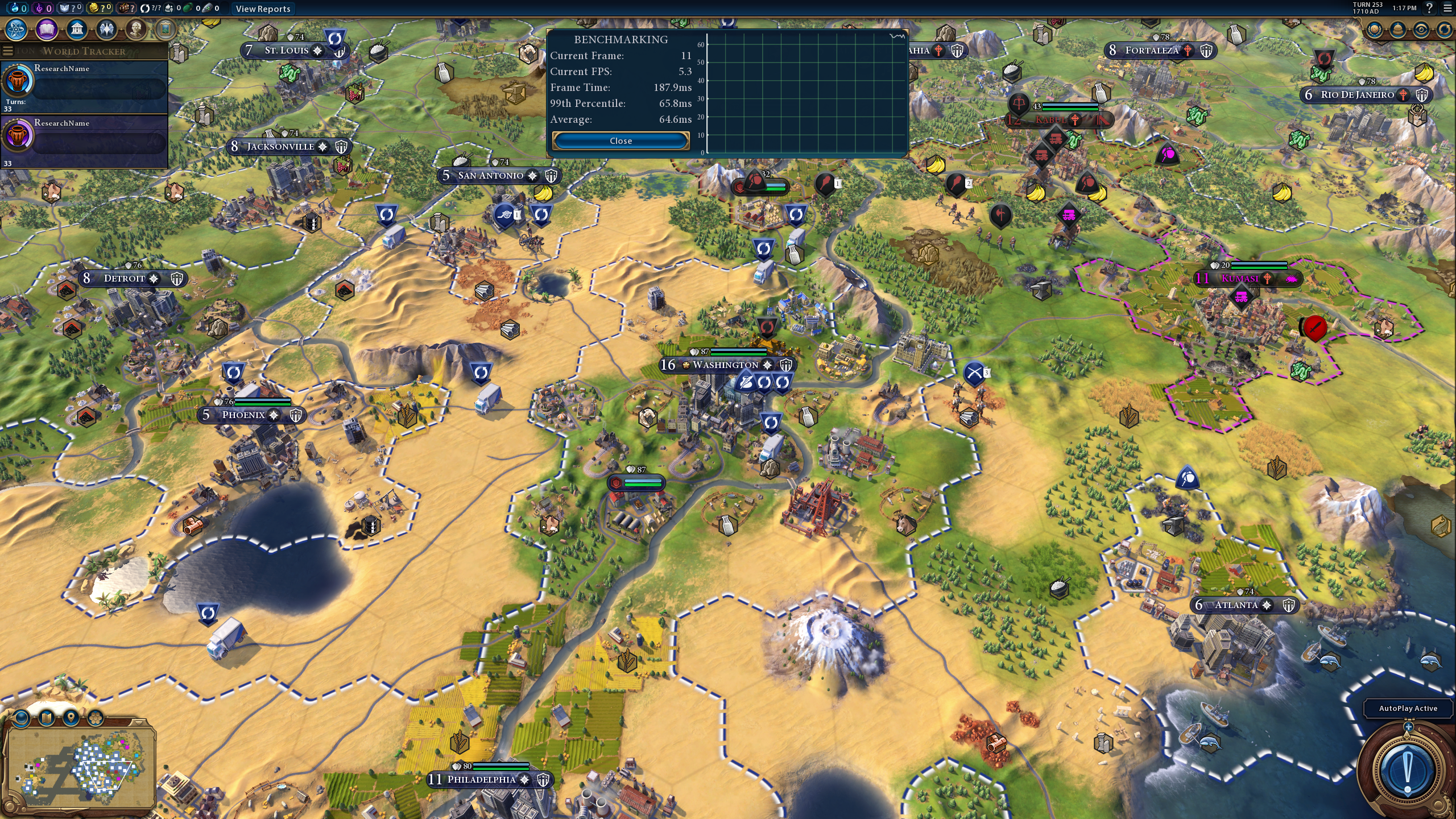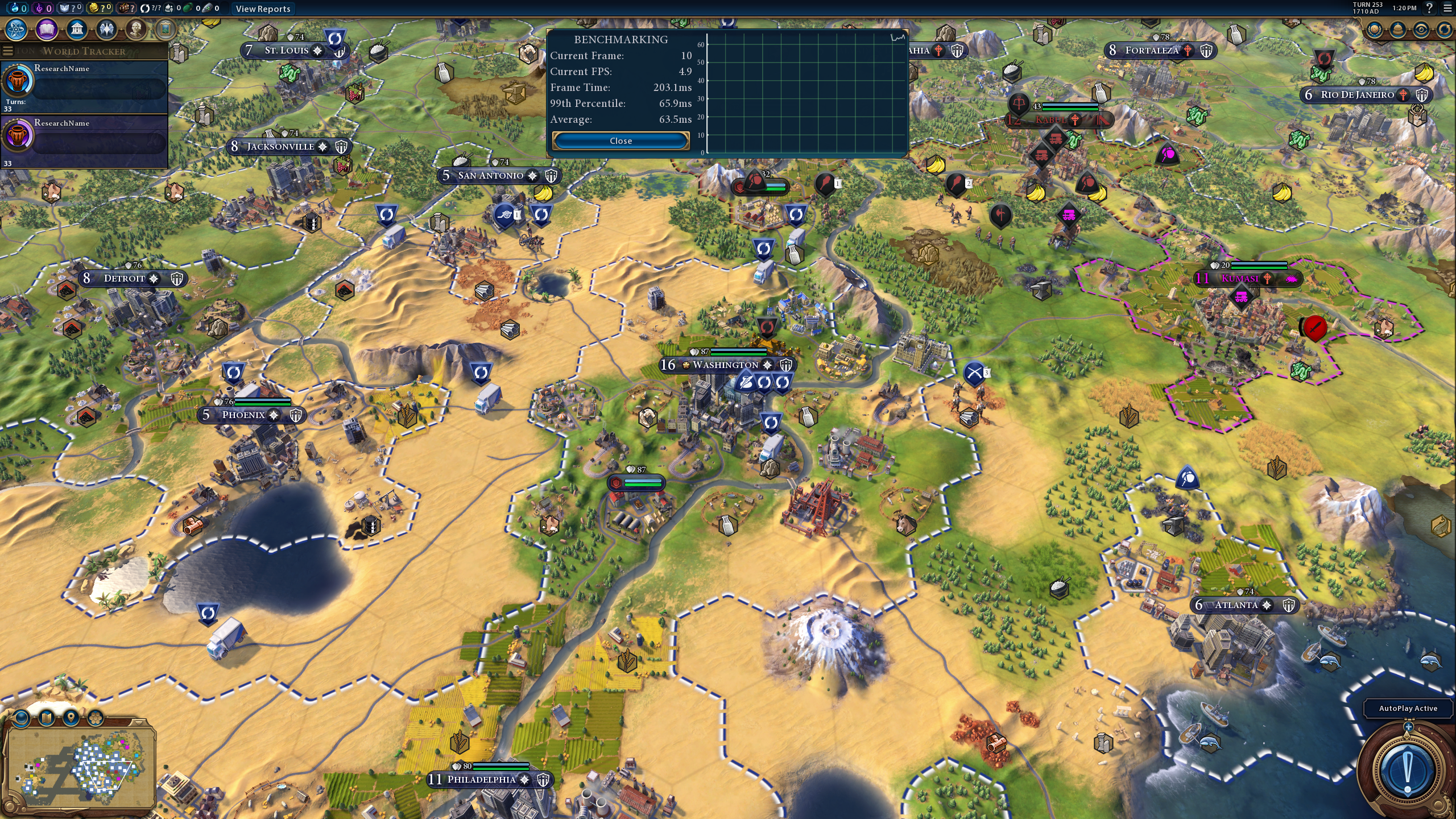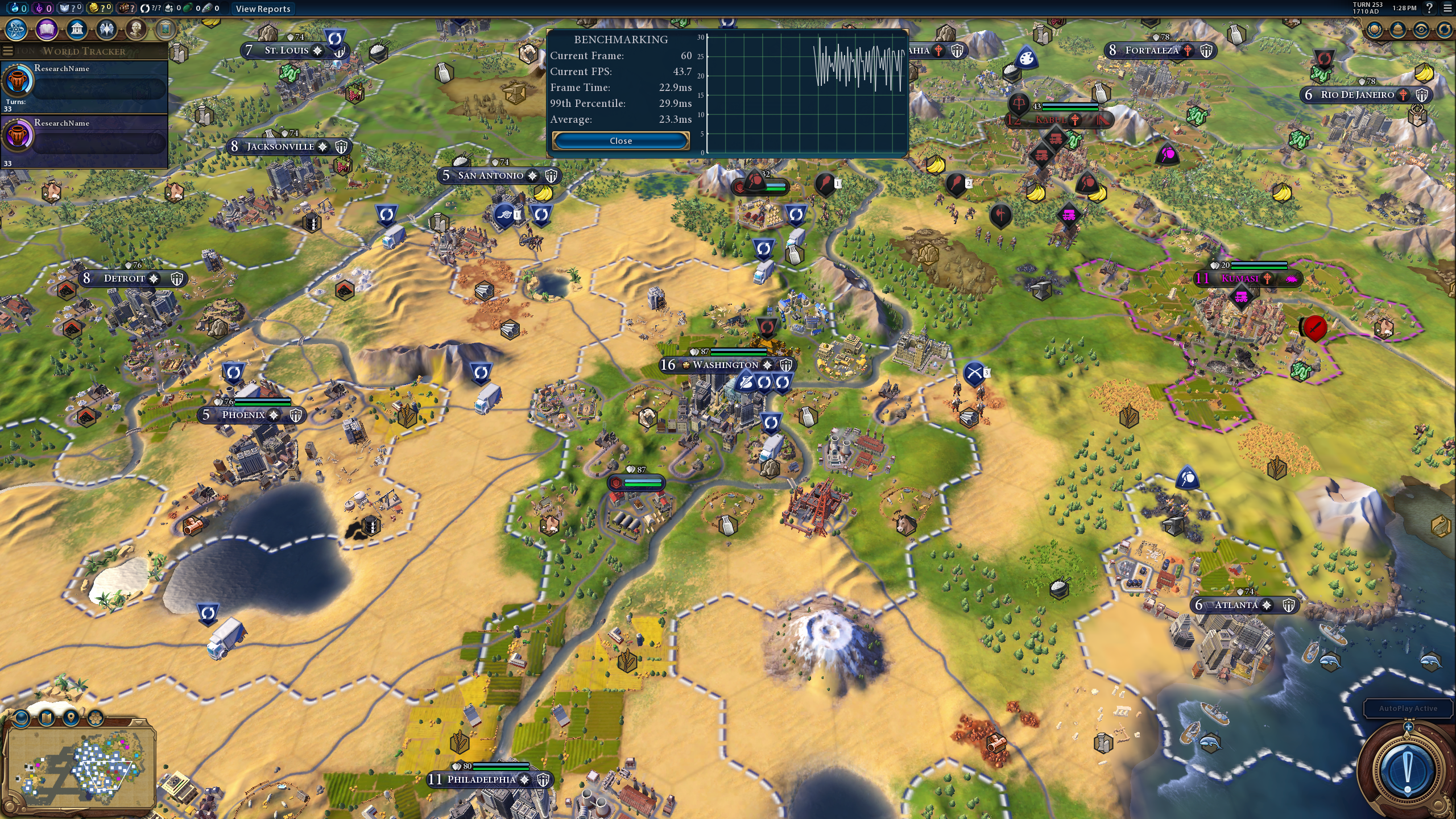Sid Meier’s Civilization VI seems like it should be easy for any system to run. Turn-based gameplay, no fancy 3D lighting or particle effects, and a mile-high perspective on the world, without the need for minute details.
In fact, it’s quite the opposite. The Civilization games have only grown in both CPU and GPU demands, and the result is a title that requires some serious hardware to run smoothly.
The setup
As usual, we’ll be running tests on our standard benchmark rig, a system we put together with an Intel Core i7-6950X, 8GB of DDR4, and a Zotac GeForce GTX 1060 Amp! with 6GB of GDDR5. Most users play at 1080p, so we’ll be testing at that resolution, with vertical sync off to make sure there’s no cap on our framerate.
We have to give kudos to Civilization VI for packing in an exceptional options menu.
We must give kudos to Civilization VI for packing in an exceptional options menu. Presets are handled by two sliders, one for overall detail, and the other for memory usage. This is a nice addition, as it let gamers who have a video card with only one or two gigabytes of memory get the most out of it. As we’ve learned through our performance testing in other games, there are often features that demand performance without using much extra memory, and vice versa.
Unlike some of our performance guides for games like Overwatch or Battlefield 1, we’re a lot less focused on bringing this game in line with a 60 frame-per-second benchmark. As a turn-based game, there’s a lot more leeway in terms of smooth gameplay. You don’t need to ensure perfectly consistent framerates, as even losing a few here and there won’t cause you to die or lose the game. So, bring on the super-scaled shadows and animated leaders. You’ll still have all the frames you need to take over the world.
This time around, there’s more room for lower-end systems to get in on the fun. But make no mistake. Civilization VI is easily the most demanding game in the series to date.
Shadow boxing
After extensive testing, we found very few individual settings that greatly affect performance on their own. Civilization VI has a wealth of sliders that break down settings to fine details, which is great, but also means individual settings have less impact than in some other games we’ve tested. Of settings that did have an individual impact, shadows was my far the most important.
Turning shadows off does result in about a 22 percent performance increase, so if you can stomach it, it’s worth taking advantage of.

Unfortunately, while having shadows off isn’t detrimental to gameplay, not having any shadows in-game can be a jarring experience. Clouds drift by without leaving a mark on the world beneath them, and monuments and cities stand like drawings on paper. If you didn’t tell someone what was off about the image, they might stand there for minutes trying to figure it out. Once you see it, however, it’s impossible to ignore.
A world without shadows may take some getting used to, and turning them off is only recommended on systems that struggle to handle the game at any level of detail.
The presets
After that, the next best move you can make towards smoother frame rates is dropping the detail. Our 6GB video card had no issue with the memory slider all the way up, but we kept it even with the performance slider for testing purposes.
We didn’t notice much of a performance difference above medium on our test rig, so if you can run the game smoothly on medium, you’ll likely be able to crank the settings. There was about a 33 percent jump in frame rate between medium and low on both sliders. But what does that jump mean in terms of fidelity?
The most notable changes in our testing were to cluttered zones, such as trees or hills, and the borders between grassy and barren tiles. This is due to the aptly-named “High detail clutter” setting, which simply controls the number of trees or crops in tiles, and in between them. Lower settings have no or minimal clutter in areas where higher details display lush forests or complex cities.
The other major noticeable change was the division between different tile types. In medium or higher, there are natural, dynamic edges, where grass springs up and waves crash against the shores. Turn the preset to low or minimum, and they look more like someone’s drawn them on with crayon. Road and rivers, for example, start to lose definition at lower detail settings, becoming a blurry mess.
Bring on the super-scaled shadows and animated leaders!
With that said, we do think Civilization VI does a good job of scaling is aesthetic over a wide range of detail settings. Its bright, colorful looks is still pleasant even at lower detail, where textures are of poor quality. We can see why the developer, Firaxis, went this route, which is a deviation from the more realistic look of Civilization V.
This is especially noticeable with fog of war. In Civilization V, the complex and beautiful cloud-like fog was great at higher settings, but at lower settings, the game didn’t even try to render it. In Civilization VI, the new map-like fog of war looks respectable even at the absolute minimum of detail.
Sure, there are other little compromises, but they’re harder to notice as gameplay picks up. Ultimately, it’s the post-processing effects that drag down performance the most. Turning off anti-aliasing entirely only provides about 3 or 4 frames per second, less than a ten percent performance bump.
Strategic mode looks simple, but is more demanding than you think
While medium or high are likely the best fit for most systems, some may have to continue dropping the presets for acceptable performance. Once you reach the minimum setting, you should know there’s an alternative to the crayon-esque textures and lack of visual effects. Under the “interface” tab in the game options, you’ll find a setting to “Start in strategic mode.”

In strategic mode, animations and textures are erased completely, leaving a stripped-down version of the world that resembles a board game. Unfortunately, the game is still fairly CPU-bound at that level, as it is with the minimum graphical option. In fact, we saw almost not performance deviation between the strategic layer and the minimum graphics settings on our test rig.
The end of the world
To make a long story short, if the game runs smoothly enough for your eyes with the settings on medium, you may want to try raising the settings even higher, as we didn’t notice much of a difference between them performance-wise. Our system is fairly mid-range when it comes to graphical performance, and overpowered in the CPU, but we think that should represent a lot of users who are GPU-bound.
One thing’s for sure — Sid Meier’s Civilization VI might not be the most graphically outstanding game, but it’s surprisingly demanding, even on mid-tier systems.







